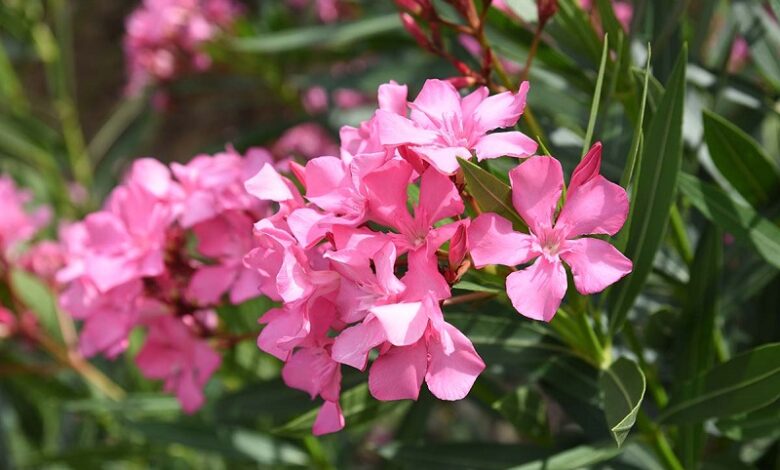Oleander Flowers Banned From Temple Offerings In Kerala: Medicinal Uses, Toxicity, and Recent Tragedy

News Mania Desk / Agnibeena Ghosh/14th May 2024
In a tragic incident in Kerala, India, a 24-year-old nurse named Surya Surendran lost her life after accidentally consuming oleander leaves, prompting two temple boards to ban the use of oleander flowers in temple offerings. This incident sheds light on the importance of understanding the medicinal uses and toxicity of oleander.
Surya Surendran’s untimely demise on April 30, believed to be due to accidental oleander poisoning, highlighted the dangers associated with this commonly found plant. Surendran, who had secured a new job in the UK, chewed some oleander leaves outside her house in Pallipad, Alappuzha, before her departure. Unaware of the plant’s toxicity, she experienced uneasiness and vomiting before collapsing at the Kochi airport and passing away a few days later.
Oleander, scientifically known as Nerium oleander, is a widely cultivated plant found in tropical, subtropical, and temperate regions worldwide. In Kerala, it is known as arali or kanaveeram and is often used for ornamental and landscaping purposes, growing along highways and beaches. The plant is available in various varieties, each distinguished by the color of its flowers.
While oleander has been mentioned in Ayurvedic texts for its medicinal properties, caution must be exercised due to its toxicity. The Ayurvedic Pharmacopoeia of India (API) acknowledges the use of oleander root bark oil for treating skin diseases. However, oleander’s toxicity has been recognized globally for centuries. The plant contains cardiac glycosides, including oleandrin, folinerin, and digitoxigenin, which exert pharmacological effects on cardiac muscle.
Researchers Anamika Chaudhari and Bhawna Singh noted oleander’s inclusion in classical Ayurvedic texts for treating skin diseases and wounds, despite its classification as a poison. They highlighted the plant’s historical use in treating serious skin conditions like leprosy. However, the therapeutic window for oleander is narrow, and overdosing can lead to severe toxicity.
Oleander toxicity manifests through symptoms such as nausea, diarrhea, vomiting, rashes, confusion, dizziness, irregular heartbeat, and, in extreme cases, death. The ingestion or inhalation of smoke from burning oleander can also induce intoxication. Despite these dangers, symptoms typically last for 1 to 3 days and rarely result in fatalities if prompt medical intervention is sought.
The recent tragedy involving Surya Surendran has prompted two temple boards in Kerala to prohibit the use of oleander flowers in temple offerings. This precautionary measure aims to prevent similar incidents and raise awareness about the dangers of oleander toxicity. Additionally, the incident underscores the need for public education regarding the identification and handling of toxic plants.
While oleander may have medicinal applications, its toxicity requires careful consideration and adherence to safety guidelines. The unfortunate loss of Surya Surendran serves as a reminder of the importance of understanding the potential risks associated with natural substances. Moving forward, efforts to educate the public about plant toxicity and promote responsible plant usage are essential for preventing similar tragedies.






